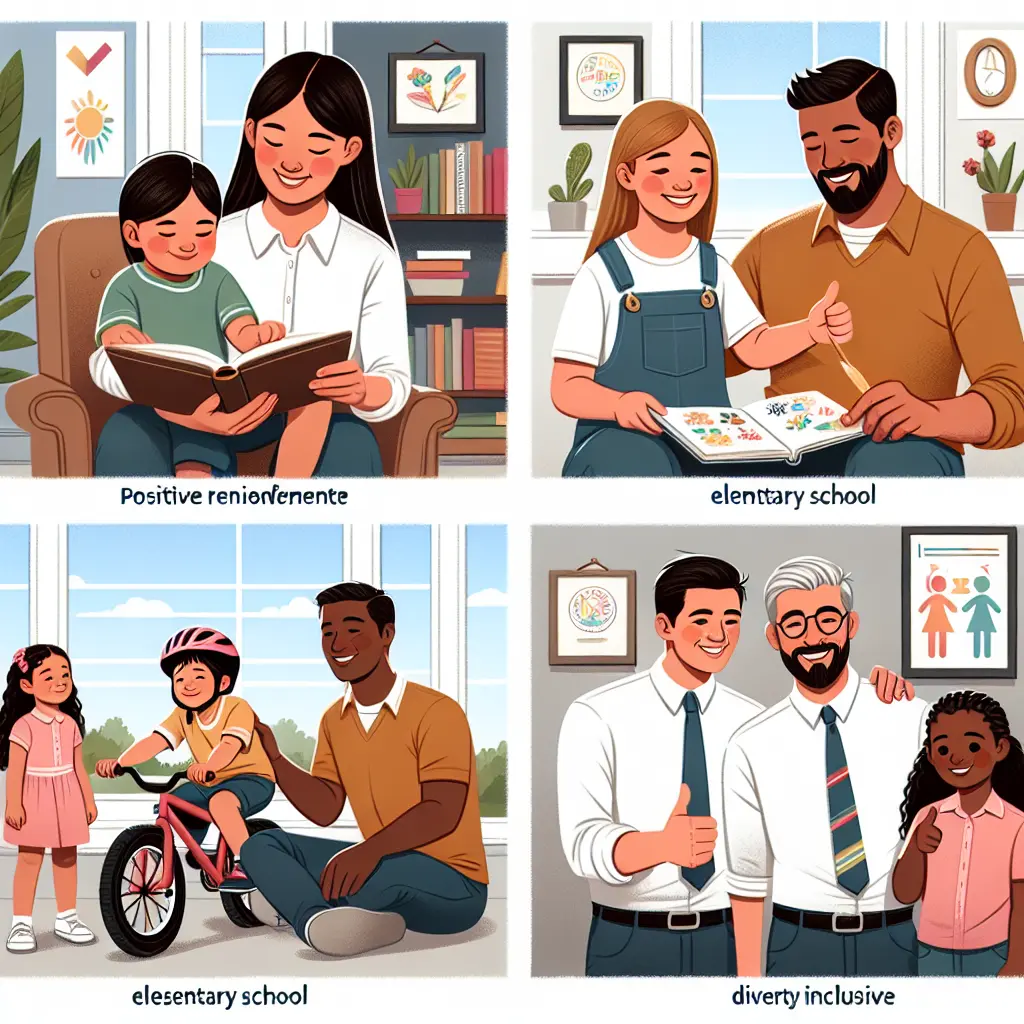
Raising children is a journey that evolves with every milestone and age. As parents and caregivers, the goal is often to foster an environment that encourages positive behavior in children. This endeavor involves understanding child development, implementing effective parenting strategies, and adapting to the unique needs of children as they grow.
Early Childhood: Laying the Foundation with Positive Reinforcement
For toddlers and preschoolers, managing behavior is often about setting the stage for how they interact with the world. Positive reinforcement for kids is a cornerstone at this age. Rewards, whether verbal praise or tangible items, effectively encourage behaviors we want to see more often. Behavioral rewards for kids, like stickers or extra playtime, can reinforce good habits early on.
Preschool behavior tips often include consistent routines which provide a sense of security and predictability. According to parenting experts, routines help children understand what’s expected of them, reducing behavioral issues (American Psychological Association). Simple rewards coupled with clear, consistent communication bolster positive behavior in these formative years.
School-Age Children: Strategies That Teach Responsibility
As children enter school age, discipline strategies evolve. The focus shifts from managing toddler behavior to teaching good behavior that fosters independence and responsibility. School-age children discipline should include age-appropriate behavior strategies that teach consequences and personal responsibility.
Using systems like token economies where children earn tokens for positive behaviors can be an effective child behavior management tool. These tokens can then be exchanged for privileges or treats, teaching children the value of working towards a goal (Child Development Institute).
Adolescence: Navigating the Teen Years with Understanding
Teenage behavior management requires a shift in tactics. It's a time marked by a quest for independence and identity exploration. Effective parenting during these years means balancing discipline with empathy. Michelle Obama’s reflection on raising daughters in the highly scrutinized environment of the White House underscores the importance of setting boundaries while also allowing space for personal growth (“Michelle Obama on raising daughters in the White House: 'Some lines drawn'”).
Behavior modification techniques for teenagers might include more complex systems of rewards and consequences that reflect their maturing needs. Engaging in open discussions about expectations and reasoning behind rules can help teens feel respected and understood, which in turn can encourage positive behavior.
Real-Life Parenting Insights
Real-world examples offer invaluable insights into effective parenting techniques across different life scenarios:
Authoritative Parenting Success: One parent shares their success with authoritative parenting, a style characterized by reasonable demands and high responsiveness, after growing up without much discipline. This approach has been linked to positive child outcomes such as self-reliance and social competence (Psychology Today).
Parenting Alone While Partner is Abroad: Another parent discusses how managing alone while their partner works abroad has surprisingly strengthened their marriage and family dynamics, possibly due to the increased empowerment and autonomy in handling day-to-day parenting challenges.
Step-Parenting Dynamics: A heartwarming account of a child who sees his stepmother as another maternal figure highlights the emotional security that comes from supportive step-parenting relationships.
Celebrity Parental Guilt: Blake Lively openly discusses her guilt over working instead of being with her family full-time, a sentiment many working parents can relate to. This highlights the universal challenges of balancing career and family life.
Solo Parenting: A widowed father describes his flexible, day-by-day parenting approach following the loss of his spouse, emphasizing the importance of adaptability in facing unexpected life changes.
Cultural Parenting Perspectives: An American mother raising her kids in Spain shares insights into how cultural differences have shaped her parenting and her children's decisions about education.
Family Size Decisions: One couple discusses their decision to have only one child after considering their family dynamics, personal desires, and external pressures, reflecting the deeply personal nature of parenting choices.
Grandparental Support: The role of grandparents in providing not just emotional support but also practical childcare solutions is highlighted in another story, showcasing the multifaceted benefits of extended family involvement.
State-Supported Parenting in Oregon: The innovative approach of providing a nurse for each newborn in Oregon underscores the importance of supporting parents right from the start to foster healthier families.
Conclusion: Cultivating a Positive Environment
Encouraging positive behavior in children isn’t just about implementing discipline strategies; it’s about nurturing an environment where children can thrive emotionally, socially, and academically. From positive reinforcement for toddlers to nuanced teenage behavior management strategies, each age requires a tailored approach based on understanding and respect.
As we've explored various methods including positive parenting techniques, behavior modification techniques, and child discipline methods, remember that each family's journey is unique. What remains constant is the love and commitment that underpin all these efforts.
Thank you for joining me on this exploration of fostering positive behavior across different stages of childhood. May your parenting journey be filled with joy, learning, and growth.
— Alice Warner